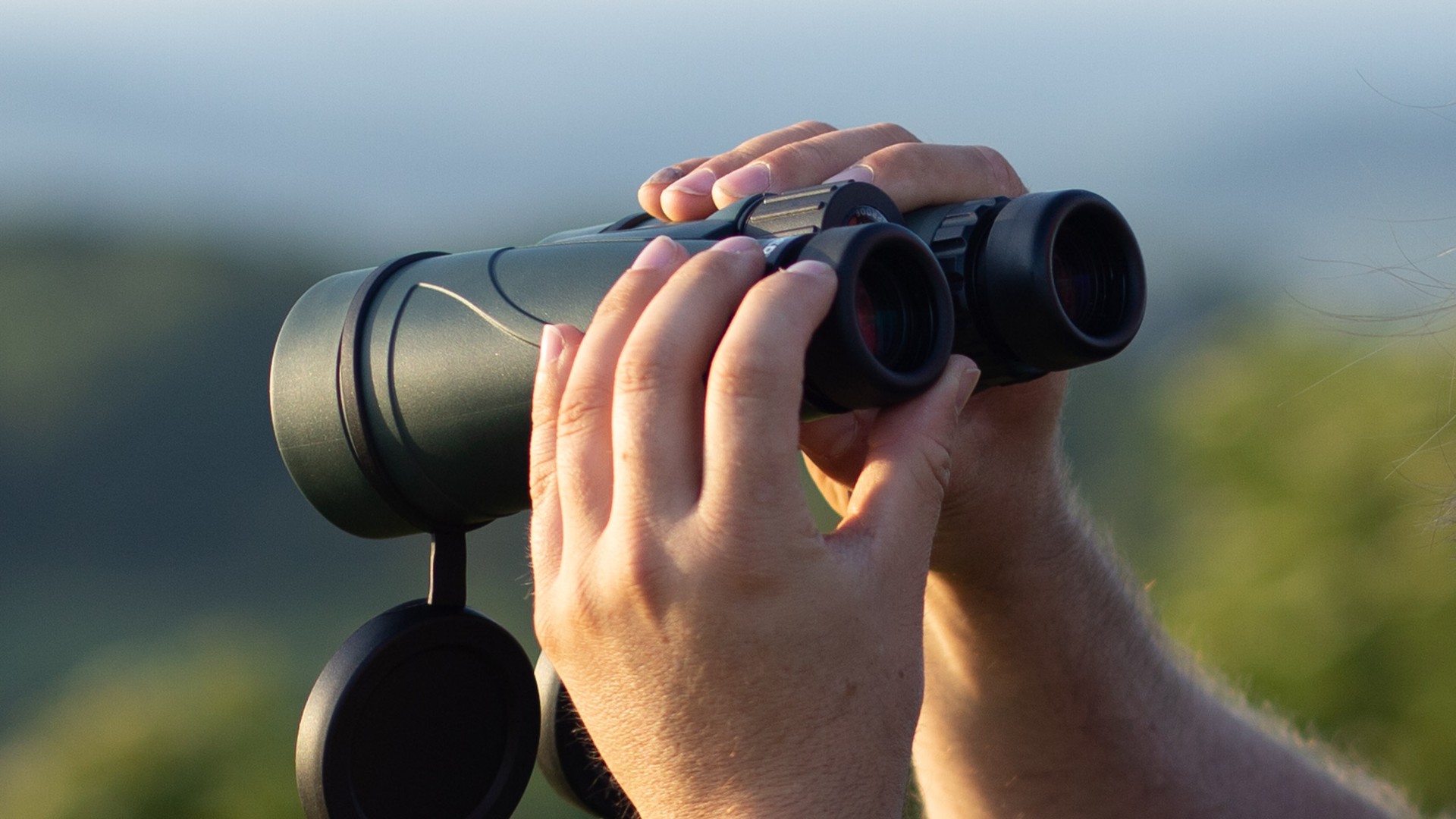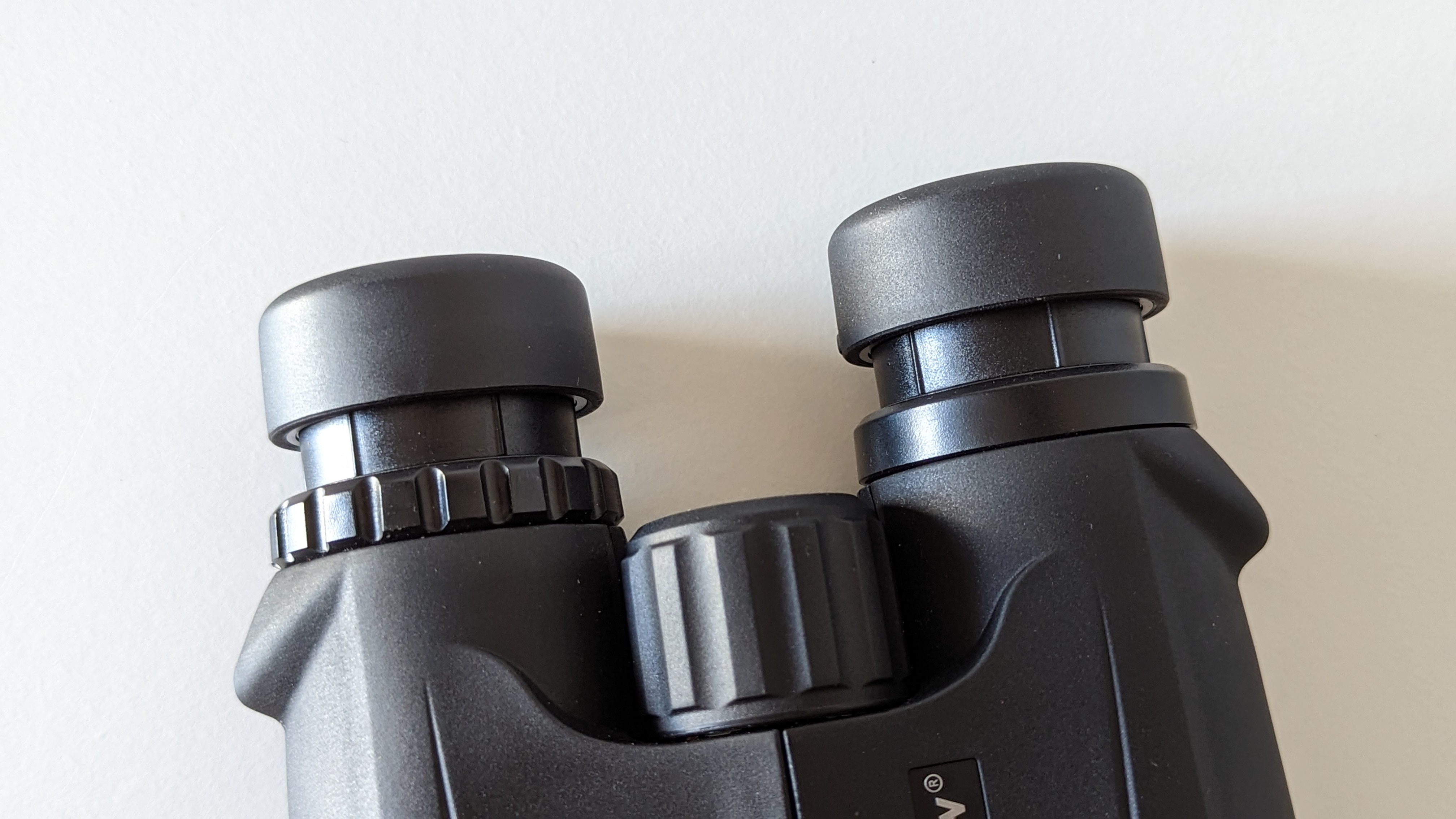Live Science Verdict
Mediocre performance and average build quality, the Outland X 10x42 binoculars only really have portability going for them and even then, their quality is surpassed by Celestron’s other binoculars.
Pros
- +
Slim travel-friendly design
- +
Objective lens caps hold firm
- +
Inconspicuous appearance
Cons
- -
Focusing wheel too stiff
- -
Adjustable eyecups too loose
- -
Heavy vignetting
Why you can trust Live Science
The Celestron Outland X 10x42 binoculars sit at very much an entry-level price point and are best suited to those who want a generalist binocular without dropping the big bucks. They perform adequately for most observers but due to several areas that could do with improvement, there are other binoculars we’d rather pick up than these.
Design: Roof prism
Magnification: 10x
Objective lens aperture: 42mm
Angular field of view: 5.5 degrees
Eye relief: 18.2mm
Weight: 23.6 oz (670 g)
Dimensions: 146mm x 126mm x 53mm (5.75" x 4.96" x 2.08")
Optical performance isn't too bad considering that there are BaK-4 prisms and multi-coated optics inside these binoculars. However, quite a few functional features are actually relatively poor. Overall, the negatives outweigh the positives in this binocular and for that reason we'd actually recommend you look at our guide to the best binoculars for better binoculars that sit at around the same kind of price.
If you do like the look of the Outland X's though, their roof prism design and light weight means they're relatively portable and won't take up too much room in a travel bag or drag you down during a long hike.
Celestron Outland X 10x42 binocular: Design
- Slim roof prism design makes them portable
- They won’t stand out when observing flighty subjects
- Objective lens caps affix to binoculars and fit snugly around the tubes.
The design of these binoculars really is the best bit. An all-black paint job is flashed with two shiny silver name badges and info details. No bright spots or colorful stripes on these binoculars means they won’t catch any attention by other observers or birds and subjects that are likely to bolt at the sight of them (this is especially helpful in wildlife hides).
Easy to travel with, they weigh just 23.6 oz and have a maximum width of 4.96-inches when fully extended at the hinge. A neckstrap comes with the binoculars and while it feels inexpensive it does the job and is commensurate with the quality you’d expect from binoculars at this budget.
The adjustable eyecups are comfortable enough, made from a firm rubbery plastic that envelopes the rest of the binocular body which also provides enough grip to hold them in cold or warm weather without issue.
That is, despite having any form of texturized areas that would aid grip. Binoculars this smooth normally give the problem of slipping out the hand but thanks to the slightly more rubbery coating this isn’t so much of an issue. Operating them with gloves on is also easy but the focusing wheel and other functions leave a bit to be desired, as we’ll discuss in the functionality section below.
Get the world’s most fascinating discoveries delivered straight to your inbox.
Celestron Outland X 10x42 binocular: Performance
- Views are adequate due to BaK-4 multi-coated glass
- Focusing wheel takes too long to pull
- Heavy vignetting causes real issues for adult users
For the average observer who has nothing else to compare these binoculars to the Outland X 10x42 provide a decent 10x magnification and the 42mm objective lenses allow enough light in to use in slightly lower light levels towards twilight. But it's in their use that we were slightly disappointed.
Views were spoilt for us by heavy vignetting around the edges of the image circles, despite setting up the adjustable eyecups correctly. Even a slight twitch of the eyes side-to-side or up-and-down when using them pulled a big, heavy fringe into view which at times completely obscured our subjects. When using these in bird hides we found it was during the crucial moments of spotting a rare bird that our excitement got the better of us and caused this most frequently - right when you don’t want it to happen.
When we had a subject in focus and weren’t plagued by vignetting the imaging was decent enough. No color fringing is obvious when viewing subjects against an equally bright backdrop, but as soon as we gazed up towards the sky (such as planes and helicopters in the sky, or birds in branches hanging up above) we noticed some chromatic aberration in blue and magenta hues. This was surprising considering the binoculars have BaK-4 glass and are multi-coated, but they still outperformed our expectations for the price.
We love the lens caps which hold onto the binoculars and have a small hinge of rubber to allow them to drop off the end without users losing them. They fit snugly onto the lenses and it’s really easy to reattach them by hand or, as we found out, by placing the binoculars vertically on a table or other flat surface and simply pressing them down. This makes the speed of pick-up and put-down a lot quicker, great for wildlife observations.
Celestron Outland X 10x42 binocular: Functionality
- Adjustable eyecups are too loose
- Diopter ring and hinge much too stiff
- Focusing wheel suffers from strong stiction and takes too long to pull
Unfortunately, there are quite a few things that the Outland X 10x42 binoculars don’t do well. The adjustable eyecups are far too easy to rotate and left us hurriedly readjusting several times during observations. They also don’t appear to provide enough eye relief, despite coming in at 18.2mm. It feels like they almost need a longer eye relief to account for the 4.2mm exit pupil and counteract some of the heavy vignetting that they give. Though spectacles wearers will find the eye relief satisfactory.
When setting up the Outland X for the first time it’s important to balance the left and right optical tubes to account for eye strength differences as is normal with most binoculars (some don’t have diopter adjustment). However, the diopter ring on the Outland X is incredibly stiff and hard to swivel. Those with weak grip or grip issues might want to look elsewhere at this point. Most users will be able to operate the ring fine but they seem unusually tight even when compared with Celestron’s other binoculars for around the same price.

We'd recommend instead these Nature DX binoculars which come in 10x42 size but have improved optical performance and functionality. Though they are a little more expensive.
The focusing wheel in the center of the hinge suffers from too much stiction for our liking. Stiction is ‘the friction which tends to prevent stationary surfaces from being set in motion’. It occurs right at the start of using the wheel and is incredibly tough to get moving.
We inspected our Outland X 10x42 binoculars and discovered that the left-hand tube assembly was actually rubbing against the wheel (the right-hand was clear) and this is what we attribute to the additional stiction. We note that this may be a production error and may not affect other binoculars. Once moving, the wheel isn’t too bad to operate but it does take a long time to pull focus and it felt to us that we had to scroll the wheel a lot further to pull focus from close to long-distance subjects.
Should I buy the Celestron Outland X 10x42 binocular?
We would recommend you look elsewhere unless the sharpness of the BaK-4 glass is really important to you. The other functions, as listed above, actually negate the superior glass here and we think there are plenty of other 10x42-sized binoculars that perform better for the money.
They are suitable for generalist observers if budget is tight and there are no other options available to you in your region or territory, but overall we’d not pick these up ourselves due to the problems with the eyecup adjustments, the stiff hinge, the awkward focusing wheel and heavy vignetting.
If this product isn't for you
Instead, we would recommend the Celestron Nature DX line of binoculars. They come in a more attractive (and camouflaging) natural green color and provide better grips down the length of the binoculars. Okay, they’re a little bigger, heavier and more expensive, but we think it’s worth investing a little more and getting these. We reviewed the Celestron Nature DX 12x56 and gave them four and a half out of five stars back in 2022 but Celestron also sells the 10x42 models to compare with the Outland X’s reviewed here.
If you’re happy paying three times the price we’d highly recommend the Olympus 8x42 Pro binoculars that we reviewed. They have excellent views and are waterproof and dust-repellant so you can use them pretty much anywhere you like. Best of all they’re super portable thanks to the roof prism design keeping the shoulders slender for pocketing and popping in a carry bag.

Jase Parnell-Brookes is the Managing Editor for e-commerce for Live Science and Space. Previously the Channel Editor for Cameras and Skywatching at Space, Jase has been an editor and contributing expert across a wide range of publications since 2010. Based in the UK, they are also an award-winning photographer and educator winning the Gold Prize award in the Nikon Photo Contest 2018/19 and named Digital Photographer of the Year in 2014. After completing their Master's degree in 2011 and qualifying as a teacher in 2012, Jase has spent the last two decades studying and working in photography and publishing in multiple areas, and specializes in low light optics and camera systems.





